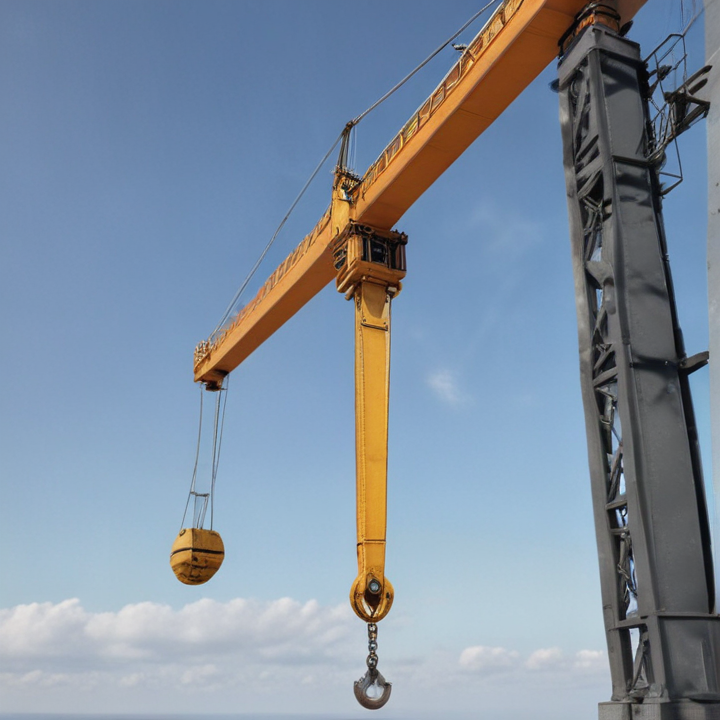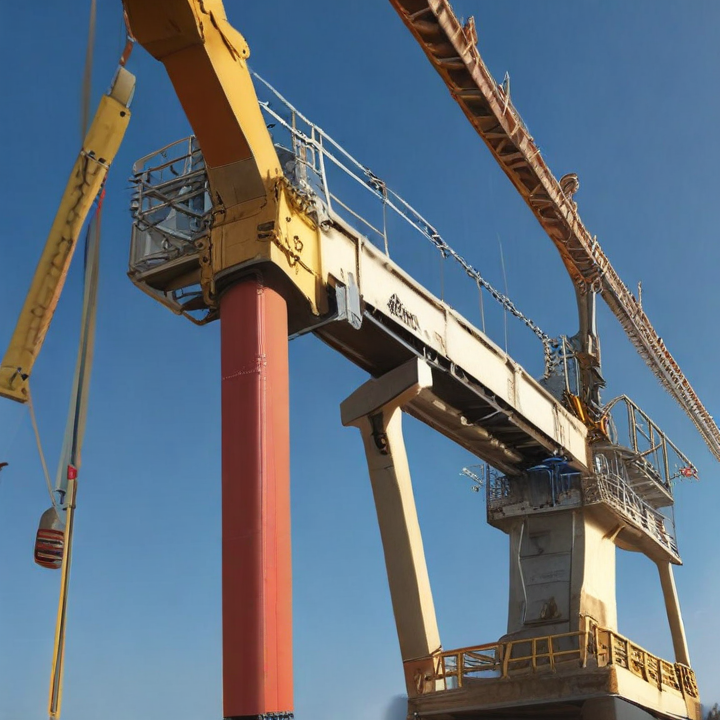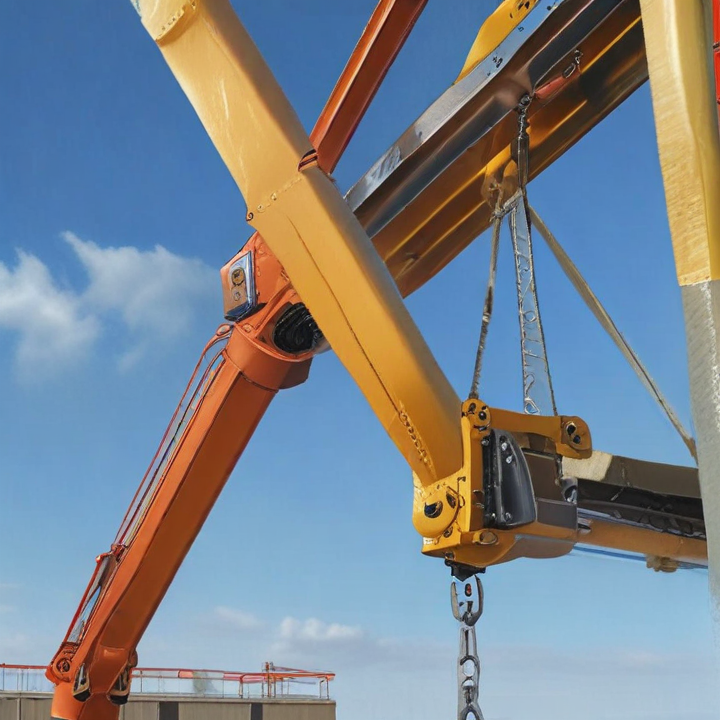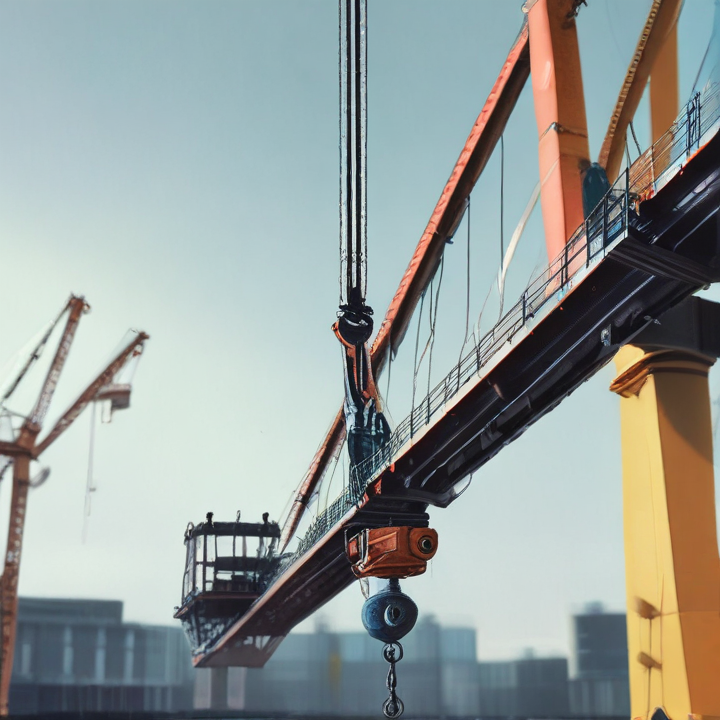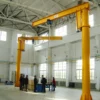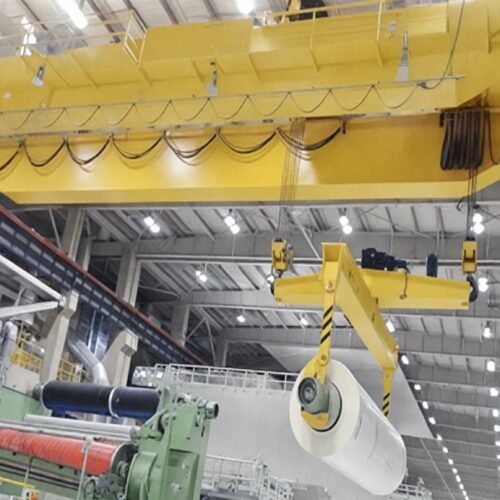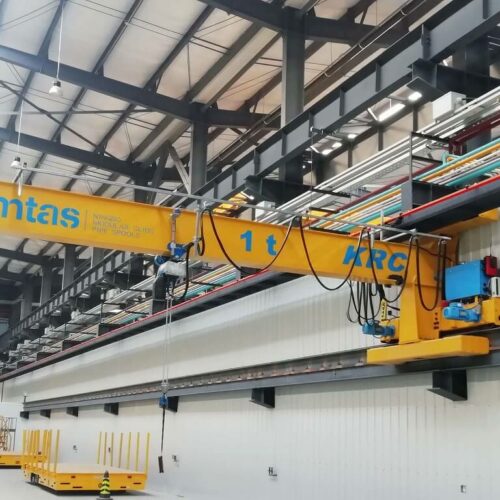jib crane hoist Safety Certifications
Safety certifications for jib crane hoists are critical to ensure they meet stringent safety and performance standards. Key global and regional certifications include:
1. OSHA Compliance: The Occupational Safety and Health Administration (OSHA) sets federal standards in the U.S. for workplace safety. Cranes must comply with OSHA’s 29 CFR 1910.179 for general industry and 29 CFR 1926 Subpart CC for construction.
2. ANSI/ASME Standards: The American National Standards Institute (ANSI) and the American Society of Mechanical Engineers (ASME) provide critical guidelines. ASME B30.16 covers overhead hoists, and ASME B30.11 covers underhung cranes and monorails, including jib cranes.
3. CE Marking: In Europe, jib cranes must comply with the Machinery Directive 2006/42/EC. The CE marking indicates conformity with health, safety, and environmental protection standards for products sold within the European Economic Area (EEA).
4. ISO Certification: The International Organization for Standardization (ISO) provides global standards such as ISO 9927 for crane maintenance and ISO 23814 for crane inspections.
5. CSA Certification: In Canada, jib cranes should meet the Canadian Standards Association (CSA) standards, particularly CSA B167 for overhead cranes, gantry cranes, and jib cranes.
6. UL and IEC Standards: For electrical components, compliance with Underwriters Laboratories (UL) standards and International Electrotechnical Commission (IEC) standards is necessary to ensure electrical safety and performance.
7. Manufacturer Certification: Depending on the manufacturer, additional certifications and tests may be conducted to ensure product reliability and safety. This may include internal quality assurance programs and third-party audits.
Ensuring a jib crane hoist holds these certifications safeguards against operational hazards, ensuring reliability, and compliance with regional and international safety standards. Always check for the relevant certifications before purchase and operation.
List Reference Technical Parameters of “jib crane hoist”
A jib crane hoist is an essential piece of material handling equipment used in various industries for lifting and moving loads. The following are the key technical parameters to consider:
1. Load Capacity: Indicates the maximum weight the hoist can lift, typically ranging from 250 kg to several tons.
2. Span: The horizontal distance that the jib arm covers, often between 2 to 8 meters, depending on the model and application.
3. Height Under Boom: The vertical distance from the floor to the underside of the jib arm, crucial for determining the maximum lifting height.
4. Hoist Speed: The speed at which the hoist lifts the load, usually specified in meters per minute (m/min). It can have single or multiple speed settings.
5. Rotation Range: Describes the degree to which the jib arm can pivot around its supporting column, typically 180° to 360°.
6. Power Source: Can be electric, pneumatic, or manual, influencing the hoist’s operational efficiency.
7. Mounting Type: Includes floor-mounted, wall-mounted, or column-mounted, each suitable for different environments and structural requirements.
8. Duty Cycle: Expresses the frequency and duration the hoist can operate without overstressing, critical for high-use environments.
9. Control System: Options include pendant control, wireless remote control, or an integrated control panel for precise operation.
10. Construction Material: Typically made from high-strength steel for durability and safety.
11. Safety Features: May include overload protection, emergency stop functions, and limit switches to prevent overtravel.
12. Compliance Standards: Should conform to relevant industry standards like ISO, ASME, or national regulations to ensure safety and reliability.
When selecting or specifying a jib crane hoist, these technical parameters help ensure the equipment meets the operational, safety, and application-specific needs.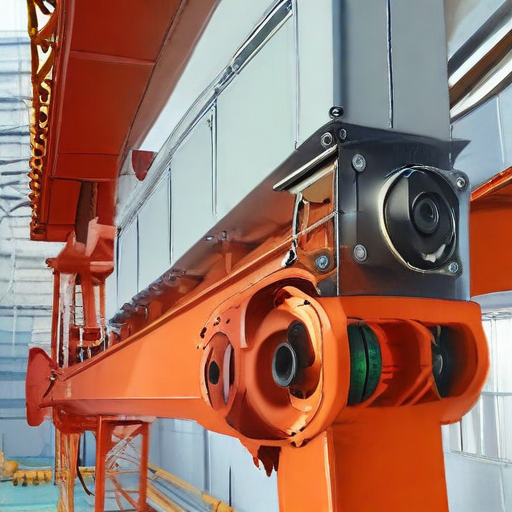
List Product features of “jib crane hoist”
A jib crane hoist is a versatile lifting and material handling solution used in various industrial and commercial settings. Here are some key features of a jib crane hoist:
1. Swing Arm Design: Allows horizontal movement of the load, typically covering 180 to 360 degrees, enhancing operational flexibility.
2. Load Capacity: Available in a range of capacities to suit different applications, often from a few hundred pounds to several tons.
3. Hoisting Mechanism: Can be manual, electric, or pneumatic, providing options for different power sources and lifting needs.
4. Height and Reach: Adjustable boom lengths and heights to accommodate specific workspace requirements and lifting tasks.
5. Mounting Options:
– Floor-Mounted: Securely bolted to the floor, providing stability for heavy loads.
– Wall-Mounted: Attached to walls or columns to save floor space.
6. Rotation Stops: Integral stops that can limit the rotation range, enhancing safety and preventing collisions.
7. Weather Resistance: Models with corrosion-resistant finishes for outdoor or harsh environments.
8. Ease of Installation: Designed for straightforward installation and minimal disruption to existing operations.
9. Control Options: Features such as pendant controls, wireless remote controls, or automated systems for precise and safe load handling.
10. Versatility: Suitable for a broad range of industries, including manufacturing, warehousing, marine, and construction.
11. Customizable: Can be tailored with specific attachments and accessories to meet unique application requirements.
12. Durability: Built with robust materials to ensure long service life and reliability under heavy-duty use.
13. Safety Features: Equipped with safety mechanisms such as overload protection, emergency shut-off, and secure load holding capability.
14. Compliance: Adherence to industry standards and regulations for safe operation.
These features collectively make the jib crane hoist an indispensable tool for efficient and safe material handling in various work environments.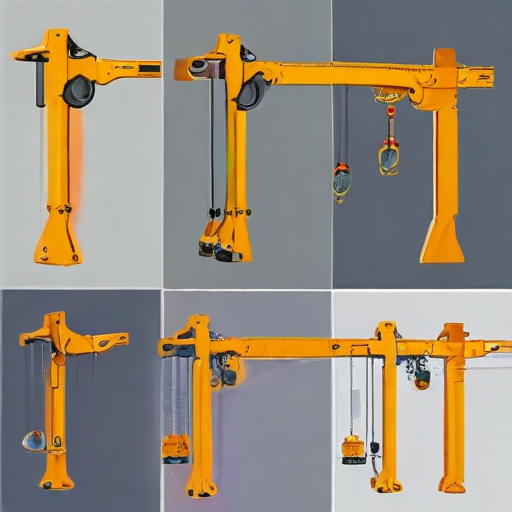
List Application of “jib crane hoist”
A jib crane hoist is a versatile lifting device utilized in various industries due to its ability to handle and move loads efficiently within a specific radius. Here are some key applications:
1. Manufacturing: Widely used to lift, move, and position heavy materials or parts within manufacturing plants, facilitating assembly, welding, and machining processes.
2. Warehousing and Logistics: Essential for loading and unloading goods, organizing inventory, and transporting items within storage facilities, reducing manual labor and enhancing operational efficiency.
3. Construction: Utilized on construction sites to lift and place building materials such as steel beams, concrete blocks, and other heavy components, improving workflow and safety.
4. Automotive Industry: Employed in automotive plants for lifting engines, transmissions, and other heavy parts during assembly, maintenance, and repair operations.
5. Maritime: Crucial in shipyards and docks for handling cargo, moving large ship components, and maintaining vessels, ensuring efficient loading and unloading operations.
6. Energy Sector: Used in power plants and wind turbine maintenance for lifting heavy equipment, machinery, and components, enhancing the efficiency and safety of maintenance operations.
7. Aerospace: Essential in the aerospace industry for handling aircraft parts, engines, and other large components during manufacturing, assembly, and maintenance activities.
8. Mining and Heavy Industries: Utilized for lifting and transporting heavy mining equipment, ore, and other materials, thereby improving operational efficiency and safety.
9. Maintenance and Repair: Often employed in various facilities for routine maintenance tasks, including lifting and positioning heavy equipment or components that require repair or servicing.
10. Agriculture: Used to handle heavy farming equipment and materials, such as feed, fertilizers, and machinery parts, facilitating easier management and transportation within agricultural operations.
These applications leverage the jib crane hoist’s flexibility, precision, and capacity to improve productivity, safety, and operational efficiency across different sectors.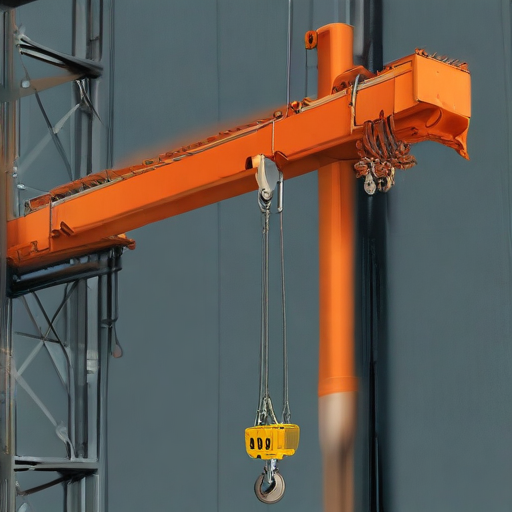
List Various Types of “jib crane hoist”
Sure! Here are various types of jib crane hoists, a versatile material-handling solution in industries such as manufacturing, warehousing, and construction:
1. Manual Chain Hoists
– Description: Operated by pulling a chain manually.
– Features: Cost-effective, minimal maintenance.
– Ideal Use: Small-scale lifting tasks, low-frequency operations.
2. Electric Chain Hoists
– Description: Powered by an electric motor.
– Features: Smooth operation, high lifting capacity, and speed.
– Ideal Use: Frequent lifting tasks, higher load capacity.
3. Wire Rope Hoists
– Description: Utilizes wire ropes instead of chains.
– Features: Greater durability and lifting capacity.
– Ideal Use: Heavy-duty applications, demanding environments.
4. Pneumatic (Air) Hoists
– Description: Powered by compressed air.
– Features: Safe in explosive or flammable environments.
– Ideal Use: Petrochemical, mining, and heavy industry sectors.
5. Hydraulic Hoists
– Description: Operates using hydraulic fluid pressure.
– Features: High power-to-weight ratio, smooth lifting.
– Ideal Use: Precision lifting tasks, heavy load manipulation.
6. Low Headroom Hoists
– Description: Designed to maximize lifting height with minimal overhead space.
– Features: Compact design.
– Ideal Use: Confined spaces, low-clearance areas.
7. Variable Speed Hoists
– Description: Offers adjustable lifting speeds.
– Features: Enhanced control, safety.
– Ideal Use: Precision lifting, applications requiring variable lifting speeds.
8. Explosion-Proof Hoists
– Description: Specifically designed to operate in explosive atmospheres.
– Features: Enhanced safety features.
– Ideal Use: Hazardous environments, chemical processing.
9. Hand-Powered Hoists
– Description: Operated manually, similar to manual chain hoists but with different mechanisms.
– Features: Simple, robust.
– Ideal Use: Light-duty tasks, areas without power access.
10. Motorized Trolley Hoists
– Description: Integrates a motorized trolley for horizontal movement.
– Features: Easy load positioning, efficient.
– Ideal Use: Applications requiring both horizontal and vertical load movement.
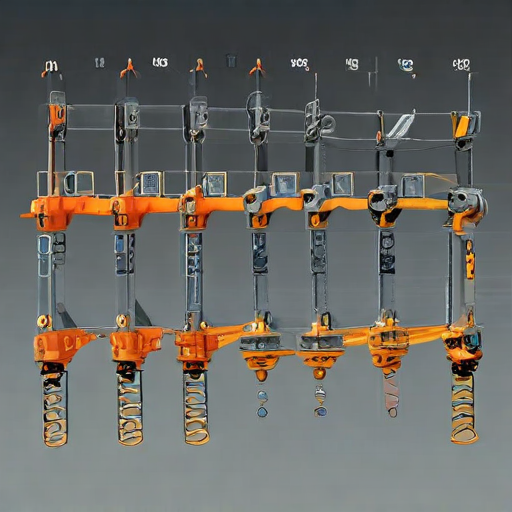
jib crane hoist Accessories Upgrades and Custom Manufacturing Options
Jib crane hoists are versatile tools essential in many industries, and optimizing them with the right accessories, upgrades, and custom manufacturing options can significantly improve efficiency and safety. Here are some key considerations:
Accessories:
1. Electric Hoists: Upgrade to electric hoists for faster and more precise lifting operations compared to manual or pneumatic versions.
2. Variable Speed Controls: Enables the operator to control lift speeds, enhancing precision and reducing wear on the system.
3. Trolleys: Motorized or manual trolleys facilitate the easy movement of loads across the beam.
4. Limit Switches: Prevents over-lifting and protects against potential damages by automatically stopping the hoist at a preset height.
5. Radio Remote Controls: Offer enhanced operator safety and convenience by allowing control from a distance.
Upgrades:
1. Anti-Sway Systems: Reduce load swing and increase safety and efficiency during operation.
2. Load Indicator Systems: Display real-time weight of lifted loads, preventing overloading and ensuring compliance with safety standards.
3. Weatherproofing: Upgrade components for outdoor use to withstand harsh environmental conditions, ensuring longevity and performance.
4. Automated Motion Control: Incorporate programmable logic controllers (PLCs) for automated lifting sequences, increasing repeatability and reducing manual input.
Custom Manufacturing Options:
1. Material Upgrades: Opt for stainless steel or galvanized components for corrosion resistance, especially in hostile environments.
2. Beam Length and Height Adjustments: Customize according to specific operational space requirements, ensuring optimal use of the workspace.
3. Specialized Attachments: Fabricate custom end-effectors or grabs tailored to specific load shapes and materials, improving handling efficiency.
4. Integration with Existing Systems: Ensure compatibility with existing infrastructure, such as warehouse management systems or other cranes, for seamless operation.
5. Explosion-Proof Components: Use explosion-proof motors and controls in hazardous environments, ensuring compliance with safety regulations.
Investing in tailored accessories, upgrades, and custom options can transform a standard jib crane hoist into a highly specialized and efficient tool, ensuring safety and maximizing productivity.
List Quality Control and The Manufacturing Process of “jib crane hoist”
Quality Control for Jib Crane Hoist
1. Incoming Material Inspection:
– Verify raw materials (steel, cables, motors) against specifications.
– Check for structural integrity and defects.
2. Precision Machining Check:
– Inspect cut, drilled, and machined parts for adherence to design blueprints.
– Apply tolerance checks using calipers and micrometers.
3. Welding and Fabrication Quality:
– Visual and ultrasonic inspection of welds to detect cracks or voids.
– Ensure welders are certified and adhere to welding procedures.
4. Component Testing:
– Functional tests on motors, electrical systems, and safety mechanisms.
– Load testing to assess maximum capacity and operational safety.
5. Assembly Inspection:
– Confirm alignment and fit of parts during assembly.
– Test operational functionality of assembled jib crane hoist.
6. Final Inspection and Documentation:
– Detailed review of the final product against quality standards.
– Maintain traceability with complete inspection records and certifications.
Manufacturing Process of Jib Crane Hoist
1. Design and Engineering:
– Draft detailed 2D/3D designs and engineering plans.
– Perform simulations and stress analysis to identify potential issues.
2. Procurement of Materials:
– Source high-quality steel, cables, motors, control systems.
– Ensure suppliers meet certification and quality standards.
3. Cutting and Machining:
– Use CNC machines and cutting torches to shape steel components.
– Drill holes for fasteners and other fabrication needs.
4. Welding and Fabrication:
– Weld constituent parts such as boom, mast, and base plate.
– Perform heat treatments to enhance structural strength.
5. Component Assembly:
– Fit and secure hoist mechanisms, including gears, motors, and brakes.
– Assemble and attach the jib to the mast and base.
6. Surface Treatment and Painting:
– Clean and treat surfaces to prevent rust and corrosion.
– Apply primer and finish coats for durability and aesthetics.
7. Quality Testing:
– Conduct rigorous load and functionality tests.
– Test electrical and control systems for reliability and safety.
8. Packaging and Dispatch:
– Securely package the jib crane hoist for transport.
– Include user manuals, safety guidelines, and maintenance instructions.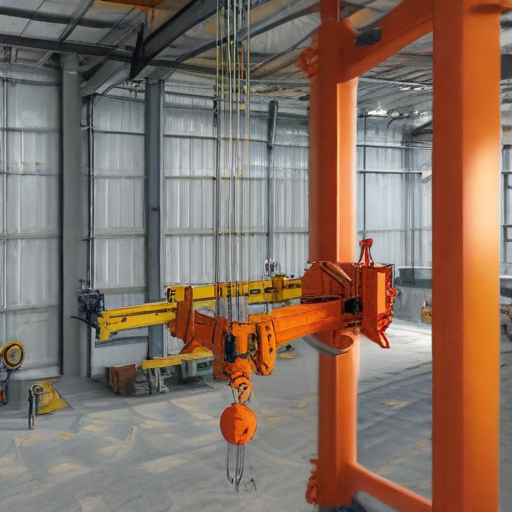
How to use “jib crane hoist”
Operating a jib crane hoist requires attention to safety and procedure. Here’s a concise guide to using one:
1. Pre-Operation Inspection:
– Check the Area: Ensure the workspace is clear of obstructions.
– Inspect the Crane: Examine the jib crane and hoist for any damages or wear. Check bolts, wiring, and controls.
– Load Assessment: Confirm the load doesn’t exceed the crane’s rated capacity.
2. Preparation:
– Position the Load: Place the load directly beneath the hoist.
– Secure the Load: Attach the lifting sling or hook to the load securely. Make sure the load is balanced.
– Safety Gear: Wear appropriate personal protective equipment (PPE) like gloves, helmets, and safety shoes.
3. Operation:
– Controls Check: Familiarize yourself with the control panel. Test the hoist’s up, down, left, right, and emergency stop functions before lifting.
– Lifting the Load: Slowly lift the load a few inches off the ground to ensure stability and balance.
– Maneuvering: Use smooth, controlled movements to avoid swinging. Rotate the jib arm and move the hoist trolley to position the load where needed.
– Lowering the Load: Carefully lower the load to the designated position. Ensure it rests securely before detaching the hoist.
4. Post-Operation:
– Store Properly: Return the hoist and jib arm to their resting positions.
– Inspect Again: Look for any signs of wear or issues after use.
– Secure the Area: Ensure the area is safe and free from hazards before leaving.
Safety Tips:
– Never exceed the crane’s rated load capacity.
– Do not stand under the load.
– Ensure all personnel are aware of the operation.
By adhering to these guidelines, you can safely and effectively use a jib crane hoist.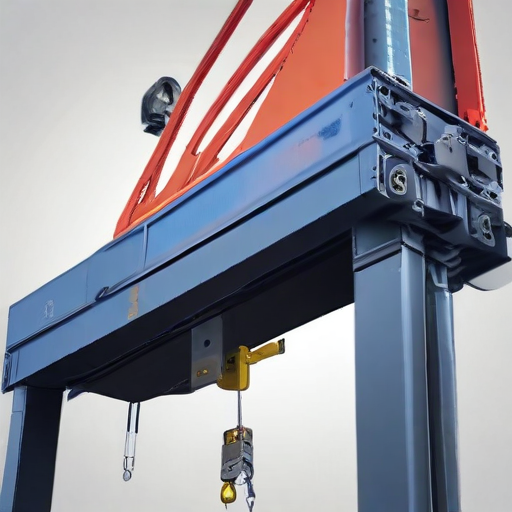
“jib crane hoist” Comparative Analysis
A jib crane hoist is essential for material handling in various industries, offering efficient lifting capabilities. To understand its utility comprehensively, comparative analysis with other lifting solutions such as gantry cranes, tower cranes, and overhead cranes is essential.
Jib Crane Hoist:
1. Design & Functionality: Characterized by a horizontal jib arm fixed to a vertical mast or wall, allowing pivoting movement. Ideal for loading docks, industrial workshops, and assembly lines.
2. Capacity: Generally handles loads ranging from 1 to 5 tons.
3. Installation: Simple installation, either floor-mounted or wall-mounted, and requires less space.
4. Operation: Provides localized lifting, typically within a circular area.
Gantry Crane:
1. Design & Functionality: Comprises a bridge supported by two legs with wheels, often spanning a workspace. Movable and used for outdoor applications and loading operations.
2. Capacity: Can lift heavy loads, sometimes exceeding 10 tons.
3. Installation: Requires substantial space and needs tracks or a flat, level surface for movement.
4. Operation: Offers a large coverage area and flexibility in indoor/outdoor use.
Tower Crane:
1. Design & Functionality: Tall structure, primarily used in construction sites for high-rise buildings.
2. Capacity: Can lift heavy and bulky materials, with reach extending up to several tons.
3. Installation: Complex and requires a professional setup involving a significant foundation and planning.
4. Operation: Suitable for precise lifting over great heights and cover large site areas.
Overhead Crane:
1. Design & Functionality: Consists of a hoist traveling along a bridge that is mounted on long runways. Common in warehouses and factories.
2. Capacity: Capable of lifting extremely heavy loads, often greater than 10 tons.
3. Installation: Requires extensive infrastructure, including runways on each side of the workspace.
4. Operation: Covers entire facility span, especially suited for industrial environments.
Conclusion:
Jib crane hoists offer practical, localized lifting solutions with ease of installation and operation. They are cost-effective for smaller loads and confined spaces but are not suitable for heavy lifting or large coverage areas. Gantry, overhead, and tower cranes offer broader capabilities but come with higher complexity and installation demands. The choice depends on specific operational needs, space, and lifting requirements.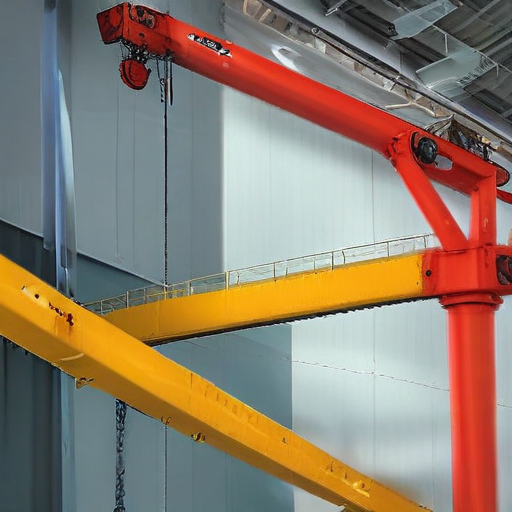
“jib crane hoist” Warranty and Support
Warranty and Support for Jib Crane Hoist
When investing in a jib crane hoist, understanding the warranty and support provided is crucial for ensuring long-term reliability and customer satisfaction.
Warranty Coverage
Most manufacturers offer a limited warranty period, typically ranging from one to three years. This warranty generally covers defects in materials and workmanship under normal use. Some warranties might also include coverage for electrical components, motors, and other critical parts. It’s important to read the warranty documents thoroughly to understand what is and isn’t covered. Regular maintenance and proper usage are often stipulated conditions to keep the warranty valid.
Support Services
1. Customer Support: Reputable manufacturers provide robust customer support services, including telephone and email assistance. This helps address any operational issues or troubleshooting requirements promptly.
2. Technical Support: Access to technical experts who can offer guidance on installation, maintenance, and repairs is essential. Some companies provide on-site support or remote assistance to ensure the crane hoist operates smoothly.
3. Spare Parts Availability: Easy access to genuine spare parts is a key aspect of support. Manufacturers with a reliable supply chain can help minimize downtime by providing prompt replacement parts.
4. Training and Documentation: Comprehensive user manuals, online resources, and training sessions for operators can enhance safe and efficient usage. Some companies offer both virtual and on-site training to better familiarize users with the equipment.
5. Service Contracts: Extended service contracts or maintenance agreements can be a valuable addition. These contracts often cover periodic inspections, preventive maintenance, and priority service, which can prolong the life of the jib crane hoist.
In conclusion, a robust warranty coupled with comprehensive support services not only protects your investment but also ensures the jib crane hoist operates efficiently and safely over its lifespan. Always opt for manufacturers with a proven track record of customer and technical support.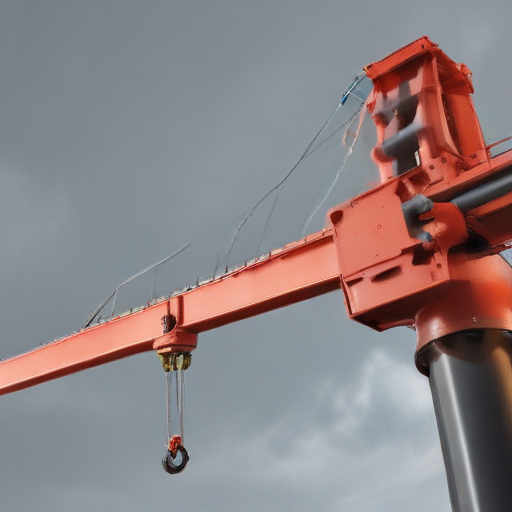
List “jib crane hoist” FAQ
Sure, here are some frequently asked questions (FAQ) about jib crane hoists:
1. What is a jib crane hoist?
– A jib crane hoist is a lifting device attached to a jib crane, designed to lift, lower, and move materials horizontally within a specific area.
2. What types of hoists are used with jib cranes?
– Common types include electric wire rope hoists, electric chain hoists, manual chain hoists, and pneumatic hoists.
3. How much weight can a jib crane hoist lift?
– The lifting capacity depends on the model and design, typically ranging from 100 kg to 20 tons.
4. What is the difference between a wall-mounted and a freestanding jib crane?
– Wall-mounted jib cranes are fixed to a wall or column, whereas freestanding jib cranes are anchored to the floor and can rotate 360 degrees.
5. How do I choose the right jib crane hoist?
– Consider the weight of the load, lifting height, area coverage, type of hoist (manual, electric, pneumatic), and specific application requirements.
6. What maintenance is required for a jib crane hoist?
– Regular inspections for wear and tear, lubrication of moving parts, checking for alignment, testing safety features, and routine servicing as per the manufacturer’s guidelines.
7. Are there safety regulations for operating jib crane hoists?
– Yes, operators must follow OSHA guidelines, local safety regulations, and adhere to manufacturer’s operating instructions and load limits.
8. Can jib crane hoists be customized?
– Yes, many manufacturers offer customization options to meet specific industry needs, including different lifting capacities, arm lengths, and control systems.
9. What power sources are used for electric hoists?
– Electric hoists typically use single-phase (for lighter capacities) or three-phase power (for heavy-duty applications).
10. Is operator training necessary for using jib crane hoists?
– Absolutely, proper training ensures safe and efficient operation, reduces the risk of accidents, and complies with regulatory standards.
These FAQs cover the essential aspects of jib crane hoists, providing a concise guide for potential users and buyers.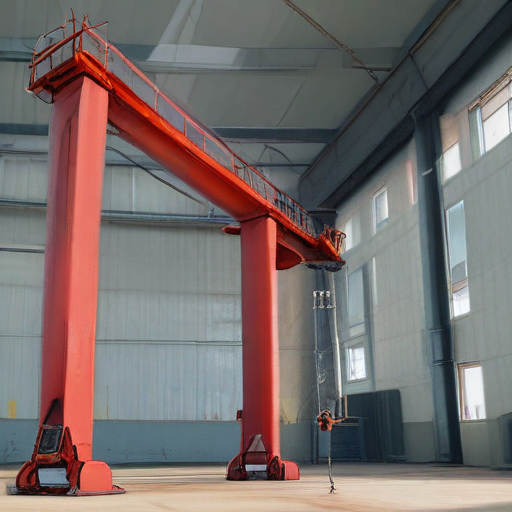
Top 10 FAQ with answer about jib crane hoist for Buyer Sourcing from China
Sure! Here are the top 10 frequently asked questions (FAQs) about sourcing jib crane hoists from China, along with concise answers:
1. What types of jib cranes and hoists are available?
Answer: In China, you can find several types of jib cranes, including wall-mounted, floor-mounted, and mobile jib cranes. Hoists available include electric chain hoists, wire rope hoists, and manual hoists.
2. Are Chinese manufacturers compliant with international standards?
Answer: Many leading Chinese manufacturers comply with international standards like ISO, CE, and ASME. Always request certification proofs.
3. What is the typical lead time for production and delivery?
Answer: Lead times vary but typically range from 4 to 12 weeks, depending on customization and order volume.
4. Can I get custom-designed jib cranes and hoists?
Answer: Yes, most reputable manufacturers offer custom design services to meet specific requirements for height, load capacity, and operational features.
5. What is the warranty period on jib crane hoists from China?
Answer: Warranty periods usually range from 12 to 24 months. Always confirm this with your supplier.
6. How can I verify the quality of Chinese jib crane hoists?
Answer: You can perform factory audits, request third-party inspection services, and review certificates of compliance and past customer testimonials.
7. What payment methods are commonly accepted?
Answer: Payment methods typically include T/T (Telegraphic Transfer), L/C (Letter of Credit), and sometimes PayPal for smaller transactions.
8. Are after-sales services available?
Answer: Yes, many manufacturers offer after-sales services, including installation support, maintenance, and spare parts. Confirm the extent of these services beforehand.
9. What are the shipping options for jib cranes and hoists to my location?
Answer: Common shipping options include sea freight, air freight, and rail depending on destination, urgency, and budget considerations.
10. How do tariffs and import duties impact sourcing from China?
Answer: Tariffs and import duties vary by country and product category. It’s advisable to check your local regulations and consult with freight forwarders for accurate cost estimations.
By addressing these FAQs, buyers can make more informed decisions while sourcing jib crane hoists from China. Always ensure to conduct thorough due diligence before finalizing any purchase.

